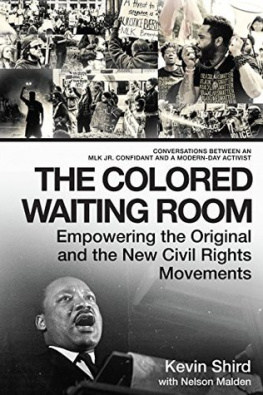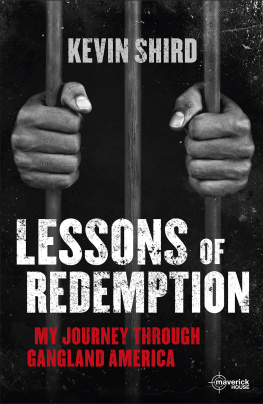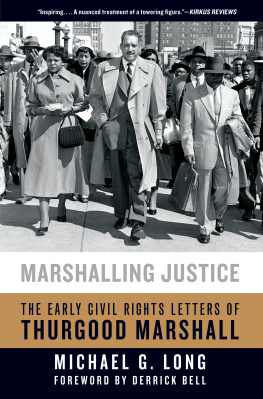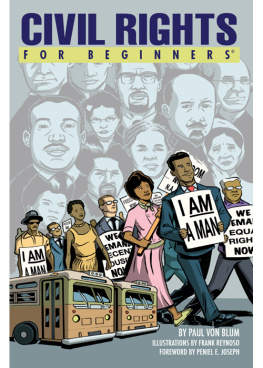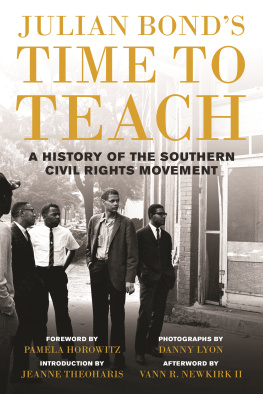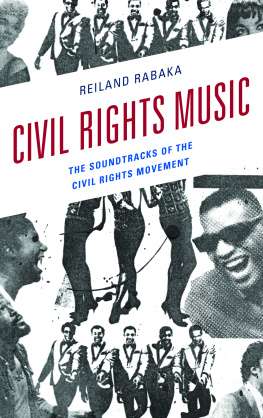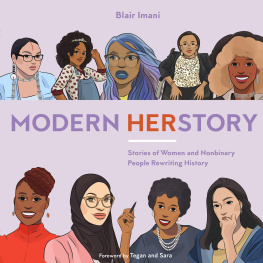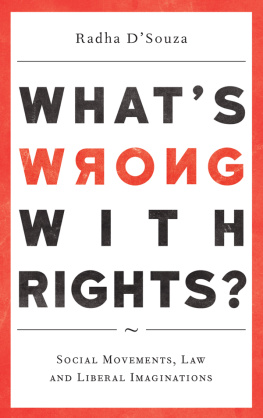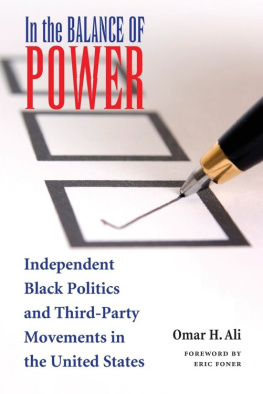INTRODUCTION
I remember the first time I saw images from the Jim Crow era: photographs of signs that read Whites Only or No Negroes Allowed. I was about ten years old at the time. Those signs, it was explained to me, were a symbol of the many dehumanizing laws and social practices that prompted the beginning of the American civil rights movement. The photographs that followed, images of people who werent allowed entrance to places, or could only go into lesser quality ones designated For Colored People, were black, like me, and their skin color was the only reason for the segregation enforced on them. If I had been alive when they were and living where they were, I, too, would have been denied entrance.
Yet the photos meant very little to me, and I was emotionally detached from what the people in them were experiencing. I had not experienced racism at that time in my life, and I knew very little of its history. I grew up in Baltimore City and nearly everyone I knew was black, and the few white people Id encountered in my short time on earth seemed harmless enough. Id never been told I couldnt go into a store or drink from a fountain or swim in a pool because of the color of my skin. So when I first saw those demeaning placards, emblems of a hate-filled and dangerous culture, I didnt feel the trauma and the pain that millions of black people suffered living under those conditions. Those labels that represented segregation seemed like they couldnt have been real, even though there were people around me who were old enough to remember the period when those signs were posted and their rules were enforced.
Fast forward to much later in my life, in 2013, and modern-day racism is unfolding in front of my eyes, all our eyes. Were not reading about it in a history book: were seeing it on the daily news, on social media, or in person. The racism isnt new, but what shines a bright light on it is the public furor and demonstrations following the acquittal of a man who shot and killed a seventeen year old in Sanford, Florida.
Social media spreads the news like wildfire and protests erupt. #BlackLivesMatter goes viral. It becomes the name of an activist organization and is chanted by protestors and written boldly on signs. It gets used at protests that follow later that year and in ones to come. Black people are putting their foot down, saying enough is enough, that blacks need to not be assumed to be guilty of crimes, to be troublemakersor worse, deserving of being accosted by police when the police know they are innocent, or set up for crimesthat they deserve respect, like white people more frequently get. The protestors are calling for justice and equality, something that should not be controversial, but not everyone sees it this way. Some people even call the group racist, as if black equality would somehow hurt white people. #AllLivesMatter trends on social media and then #WhiteLivesMatter and #BlueLivesMatter. I begin looking out for #DolphinLivesMatter; why not continue with the absurd, why not continue missing the point?
Its been unsettling for me to think that there might be more Americans concerned about the phrase Black Lives Matter than about the need for black people, and like-minded activists of all races, to combat systemic racism. But I shouldnt have been surprised. America has a long history of being averse to people who decide to mount a vigorous campaign to protect civil rights and stand up against discrimination and injustice. This practice didnt end when we left behind the era of the Black Panthers and bell-bottoms. Pages in the history books of our children may repeat themes in the pages of ones I grew up with. Are we then having a second-wave civil rights movement? Could looking back at the original movement contextualize ours today?
Theres a significant disconnect between the baby boomers of yesterday, who are old enough to remember a very different world, and a new generation of iPhone fanatics and Starbucks aficionados with short attention spans. Many people in this internet-enabled era have little interest in what happened two days ago, let alone fifty years ago before most of us were even born. How can we ensure that the sacrifices made many years ago to secure our civil rights are respected and understood by the generations that follow? How do we connect the dots between the struggles of the 1950s and 1960s against segregation and the struggles we face today as we continue to strive for social justice in America? I believe that knowledge of the past can help us draft a blueprint to fix whats broken in our society today, but we have to be willing to look back to look forward.
During the American civil rights movement, the media played a key role in the movements success. The images shown on television were critical: protestors being brutalized by police, students being blasted with fire hoses and set upon by vicious attack dogs. If not for the medias role in broadcasting those repulsive images, America might not have been so inclined to become sympathetic to the cause
The media still plays an invaluable role in social progress, but much of it is distributed not on the airwaves but on the internet. We primarily consume our media online today, often through social media platforms like Facebook and Twitter. Consuming these modern media images can make us feel as though we were present at the events they show, allowing us to feel more connected to the people who experienced them. Similarly, reading about the American civil rights movement online and watching videos of the brave and courageous protesters, who were often bludgeoned and brutalized for their opposition, can make us feel like we were there with them. Its painful, but it needs to be. Otherwise youre just a bystander.
One step above viewing media of the events or reading about them is being able to speak with someone who actually experienced them, and having the ability to ask questions. There are people alive today who can remember and share what happened. Theres been a push to record the words of survivors of atrocities, like the Holocaust, before this generation completely passes away so that there is proof of what they endured. I believe we need the people who weathered segregation to tell their experiences too. Their words must also be recorded as proof of an atrocity. We need to understand, and remember, what they went through.
The way I first learned about the life and legacy of Dr. Martin Luther King Jr., as well as the American civil rights movement, was very unorthodox. Today, its almost taboo for an African American not to know about the life and legacy of one of the most important people in our history. In fact, many of us who arent versed in his accomplishments have learned over the years to camouflage this deficit to avoid embarrassment. We might memorize a line or two from Kings most popular speeches, so that we are ready to recite them if pressed to do so. But when I was a kid, I wasnt that sophisticated, and I wasnt great at camouflaging the truth.
I was in the fifth grade, attending public school in Baltimore City, when I first began to hear about a man named Rev. Dr. Martin Luther King Jr. Back then, I thought he was a famous singer. Yes, you read that right: For a few years, in grade school, I thought that the Nobel Peace Prizewinning leader of the movement for black freedom was just another man who entertained America. I know it sounds ridiculous today, but let me explain.
The reason I believed this was because the subject of Kings life and legacy was only taught to us once a year. February was Black History Month, the time when the accomplishments of legendary African American entertainers like Cab Calloway, John Coltrane, Duke Ellington, Dizzy Gillespie, Billy Holiday, Louis Armstrong, and Nat King Cole were highlighted. Since there was no other time devoted to the subject of African American accomplishments, discussions about their lives were usually mingled together with discussions about black social and political leaders, abolitionists and revolutionaries like Harriet Tubman, W. E. B. Du Bois, Nat Turner, Frederick Douglass, and Booker T. Washington. Once a year, during Black History Month, the biographies of these colossal figures in our history were all lumped together in one big pot like alphabet soup. A young public-school student had only twenty-eight days in the month of February to learn three hundred years of African American history.

